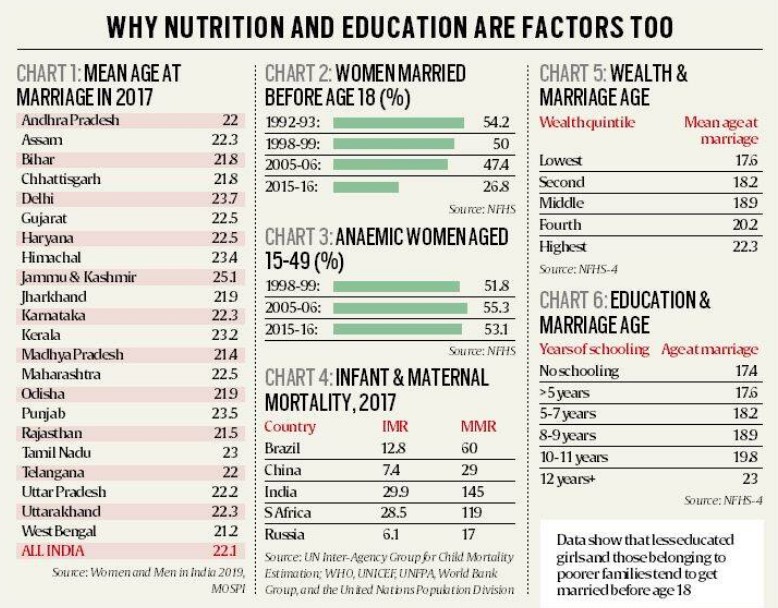Focus: GS-II Social Justice
How prevalent is underage marriage?
- Data show that the majority of women in India marry after the age of 21.
- Although, the mean age of women at marriage is 22.1 years, and more than 21 in all states- this does not mean that child marriages have disappeared.
- The latest National Family Health Survey (NFHS-4) found that about 26.8% of women aged 20-24 were married before adulthood (age 18).
How does the age of marriage correlate with health?

- Preventing early marriage can reduce the maternal mortality ratio and infant mortality ratio.
- As of 2018 data, the maternal mortality ratio — the number of maternal deaths for every 100,000 children born — is 113 – dropping from 122 in 2016.
- Click Here to read more about Maternal Mortality Rate
- India’s infant mortality ratio shows that 30 of every 1,000 children born in a year die before the age of one.
- Both these indicators in India are the highest among the BRICS economies.
- Also, young mothers are more susceptible to anaemia- more than half the women of reproductive age (15-49 years) in India are anaemic.
- The prevalence of anaemia among women has consistently been high over the last 20 years.
Can a mandated age of marriage bring about a change at population level?
- Poverty, Limited Access to Education and Economic Prospects, and Security Concerns are the known reasons for early marriage.
- If the main causes of early marriage are not addressed, a law will not be enough to delay marriage among girls.
- Women in the poorest 20% of the population married much younger than their peers from the wealthiest 20%.
- The average age at marriage of women with no schooling was 17.6, considerably lower than that for women educated beyond class 12.
- Almost 40% of girls aged 15-18 do not attend school, as per a report of the National Commission for Protection of Child Rights.
- Nearly 65% of these girls are engaged in non-remunerative work.
Hence, many believe that merely tweaking the official age of marriage may discriminate against the poorer, less-educated and marginalised women.
-Source: Indian Express



